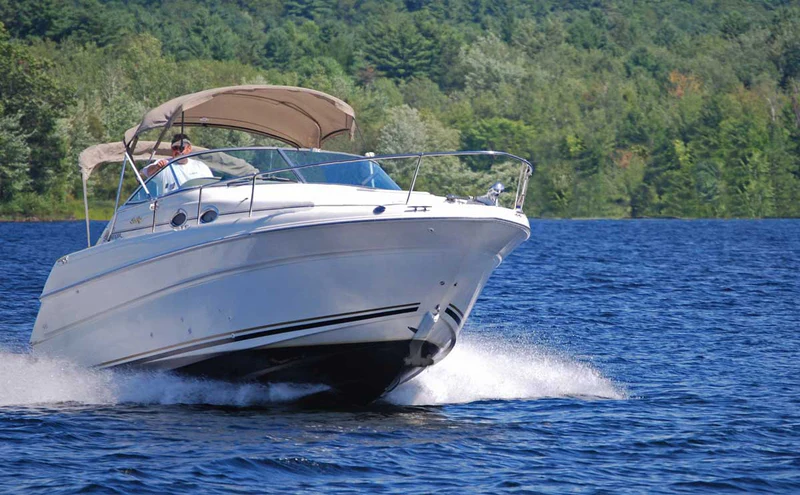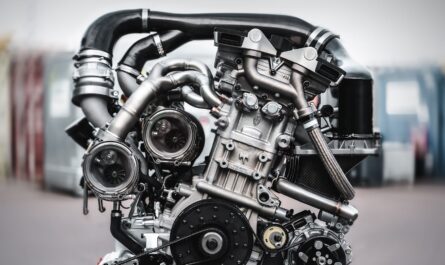Bow and stern thrusters are auxiliary propulsion devices installed on many ships and boats to assist with maneuvering. They are used to exert a directional thrust from ports located either at the bow (forward end) or stern (aft end) of a vessel. This extra propulsion allows ships and boats to turn more precisely, change direction quickly, and hold station even in high winds or sea currents.
Types of Thrusters
Azimuth thrusters
One common type is the azimuth thruster, which consists of a propeller mounted on a pivoting arm that can rotate 360 degrees. Bow and Stern Thrusters allows the direction of thrust to be altered left or right as needed. Azimuth thrusters provide excellent maneuverability as the direction of thrust can be changed instantly without changing the vessel’s heading. They are a popular choice for tugs, dredgers, offshore supply vessels and other workboats that require precise positioning ability.
Tunnel thrusters
Tunnel thrusters are embedded inside underwater tunnels built into the hull of the vessel. They work by pumping water into the tunnels via a submerged propeller to generate thrust. The direction of thrust can be altered by rotating the propeller shaft and changing the direction of the water flow. Tunnel thrusters tend to be more hydrodynamically efficient than other thruster types but require more internal space within the hull.
Water jet thrusters
Water jet thrusters, also known as waterjets, pump water into an engine-driven impeller which accelerates and ejects it through a nozzle. By directing the ejected water stream, these systems generate thrust for maneuvering. Compared to propeller-based thrusters, water jets have some design advantages including the ability to operate in very shallow waters and resistance to clogging or damage from floating debris. However, they tend to be more expensive to purchase and maintain.
Applications
Docking and Undocking
One of the most common applications of bow and stern thrusters is to assist with precise docking and undocking maneuvers. Their ability to instantly produce thrust in any direction makes them extremely useful when berthing or unberthing in tight quarters or high wind/current conditions. Many ships would find maneuvering in and out of ports and marinas much more difficult without auxiliary thruster aids.
Dynamic Positioning for Offshore Vessels
Thrusters are almost indispensable on offshore support vessels engaged in dynamic positioning activities like anchor handling, pipe laying and well stimulation. Their use allows these ships to maintain an extremely accurate position over offshore rigs, platforms and equipment despite environmental forces. Azimuth thrusters in particular are well-suited to constantly adjusting thrust as needed to counteract waves, tidal drift and other position-threatening effects.
Icebreaking and Reef Navigation
The ability to generate powerful thrust from multiple directions makes bow and stern thrusters very effective for icebreaking duties. This allows icebreakers and ice-class vessels to push and maneuver themselves through ice fields more safely. Stern thrusters are also advantageous for negotiating narrow reef passages where sudden movements risk grounding. Their versatility in applying localized thrust assists with navigating confined routes laden with navigational hazards.
Docking Large Ships
On massive ships that would normally require tugboat assistance for docking, bow and stern thrusters help reduce dependence on tugs in calmer conditions. While still no substitute for full tug support in heavier seas or ports with strong currents, their application of localized thrust enhances independent maneuverability even on vessels as large as aircraft carriers, drillships and very large crude carriers (VLCCs). This results in time and cost savings versus always requiring tug hire.
Benefits
Increased Maneuverability
The ability to instantly generate multi-directional thrust provides much greater control over maneuvering than relying solely on rudder and main engine thrust. Bow and stern thrusters effectively serve as extra “rudders” to move the ship sideways, backwards or rotate it in place. This translates to a major boost in precision movement ability in tight spaces and faster response to orders.
Improved Safety
Safer docking and station-keeping in high-risk situations like heavy seas, strong currents or ice conditions is a major safety benefit of auxiliary thruster technology. Reduced reliance on tugs when berthing or increased control in confined areas helps lower accident risks. Thrust applied independently from multiple points also counteracts potential stability issues from asymmetrical loads on the hull.
Higher Operational Uptime
The fine-tuning of vessel position that thrusters enable supports round-the-clock, uninterrupted operations like well stimulation, offshore lifting and equipment transfer even in less than ideal environmental states. Dynamic positioning is critical for maximizing productive time on the water versus downtime spent waiting for weather or tidal windows. Fitted vessels suffer less lost time spent relocating or waiting out conditions.
Environmental Stewardship
When applied judiciously, thruster use can decrease engine idling and frequency of tugboats brought alongside during docking/undocking. This lowers emissions and risk of accidental fuel/oil spills compared to relying more heavily on main engines and auxiliary craft. Their role in station-keeping also reduces anchoring needs and potential damage to seabeds from frequent chain drag.
Potential Drawbacks
Higher Capital Costs
Purchase and installation costs for bow and stern thruster systems can amount to millions depending on vessel size and specific needs. Additionally, their maintenance and repair requires specialized service and parts, raising long-term ownership expenses. This significant up-front investment factor may outweigh benefits for smaller craft with less demanding operational profiles.
Complex Maintenance Needs
Operating immersed in seawater, thruster components have complex maintenance requirements to address marine growth, corrosion and periodic overhauls. Downtime for repair works and drydocking to access internals for service adds costs. Proper training and dedicated technical support is needed to keep systems running reliably over years of intensive use.
Additional Hull Penetrations
Whether installed as tunnel or external azimuth pod units, bow and stern thrusters represent added hull penetrations beyond the traditional shaft and rudder. This increases structural complexity and provides more points for potential hull integrity issues or sea soaking/corrosion to develop over time. Careful design and material selection aims to mitigate such risks.
Increased Power Demands
Auxiliary thrusters naturally consume extra ship’s power compared to relying solely on main propulsion. Additions like capacitor bank upgrades may be needed to support both main engines and thrusters without overloading generators or trunking. The cumulative power needs also increase fuel consumption versus unaided maneuvering profiles.
In summary, while bow and stern thrusters involve higher up-front and operational costs, their applications in docking, station-keeping and precision maneuvering provide safety, productivity and environmental benefits that have made them.



